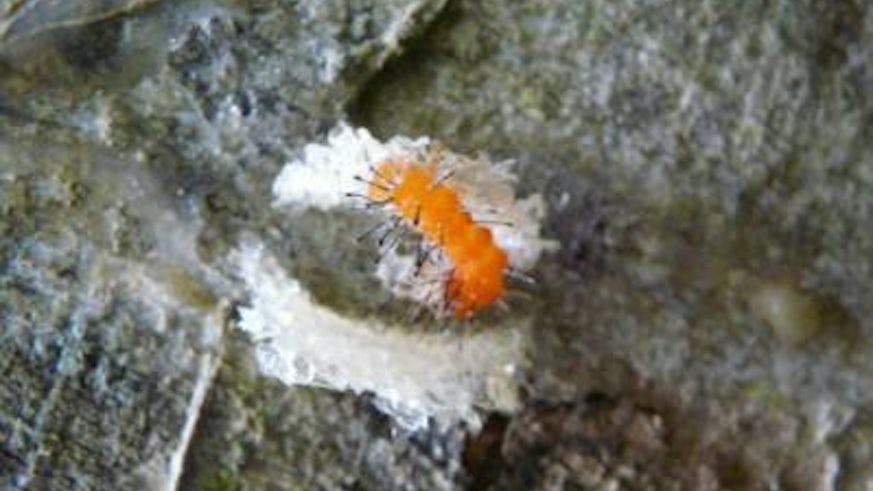Caterpillar discovery hailed a “wonderful piece of evolution”
26 January 2015

A new caterpillar has been discovered with the unique ability to make its cocoon out of flakes of dried resin - a sticky substance exuded from trees that hardens over time.
The research team, led by Professor William Symondson from Cardiff University School of Biosciences, discovered the caterpillar at the Danau Girang Field Station in the forests of Borneo. The cocoon of this caterpillar appears to be unique because no other butterfly or moth is known to make a cocoon from such material.
This particular cocoon is built from two separate walls, built using resin flake, which the caterpillar weaves together using silk. The resin is manipulated by the caterpillar to ensure that the inside is smooth, whereas the external surface is defended by sharp spikes, forged from the rough edges of resin flakes. This physical barrier makes the caterpillar, and later the pupa, hard to reach. The resin contains a broad range of toxins and antifeedants ensuring that the caterpillar is well protected from predators.
Professor Symondson stumbled upon this unique caterpillar in Borneo.
"Every year I go out to our field station, Danau Girang, on the Kinabatangan river" he said. "My speciality is entomology and I take groups of students into the forest to look at the amazing invertebrates, from gaudy butterflies to scorpions.
"One day I spotted this strange red caterpillar behaving oddly on a patch of resin on the trunk of a tree, pointing it out to the students. The caterpillar was mainly bright red, which caught my attention, and hairy. I came back at intervals during the day and photographed the various stages of construction of the cocoon.
"I had never heard of any caterpillar constructing its cocoon out of resin but thought at the time that it must be a well-known behaviour. When I got back to the UK I first searched the literature but could find nothing.
"I then contacted several people at the Natural History Museum in London, including the author, Jeremy Holloway, of the multi-volume books on the Moths of Borneo, but none had seen or heard of such behaviour before."
The caterpillar is bright red in colour, which is often used by animals, including insects, to indicate to predators that they are toxic and not worth attacking. The animal will often extract poison from the plants it is eating and then store this in its tissues as a defence.
"This was one reason why we analysed the chemical composition of the resin that it was using to construct its cocoon. The resin proved to be loaded with deterrent chemicals."
"We know of no other cases from anywhere in the world of a caterpillar making a cocoon out of flakes of resin," said Professor Symondson.
The discovery has raised questions around how the caterpillar came to utilise such an original strategy.
"It is a wonderful piece of evolution, because the resin is highly toxic and it makes you wonder how this species of caterpillar first started to use such a dangerous material" said Professor Symondson.
"Relatives of this moth make cocoons out of pieces of bark and therefore it is likely that individuals that first built included a proportion of resin into their cocoons, as well as the bark, survived better. The resin not only physically hides the pupa well but also any inquisitive predator, bird or insect, has to get past a highly toxic barrier. Few are likely to be able to do so.
"We still do not know the species. Searches in the same area have failed to find another example of this lepidopteran - if we could find a cocoon with the pupa still inside it we could hatch it out and the mystery would be solved."
This is not the first time that Professor Symondson has discovered new creatures.
"A few years ago we discovered the Ghost Slug, which became one of the top 10 new species discoveries of the year. It was completely new to science. We found it in a back garden in Cardiff, so you don't have to go to exotic places to find something new. But if you do go somewhere exotic on your holidays take an interest in what's around you, including the creepy crawlies."
"Keep your eyes open and you too can make new discoveries," he advises.